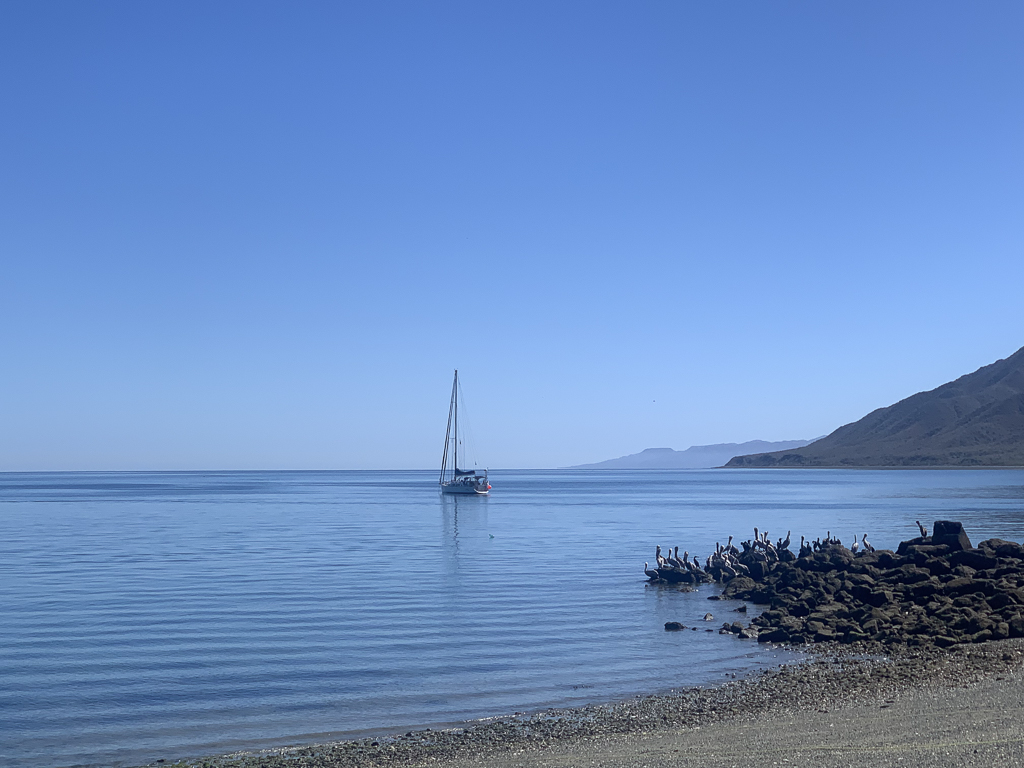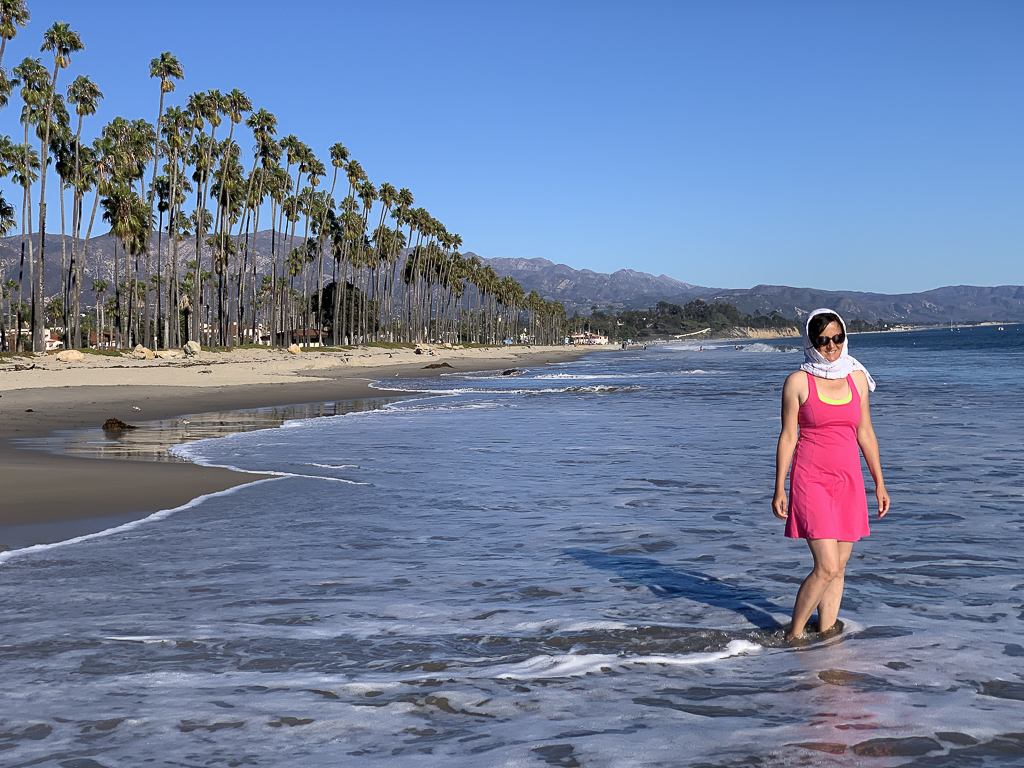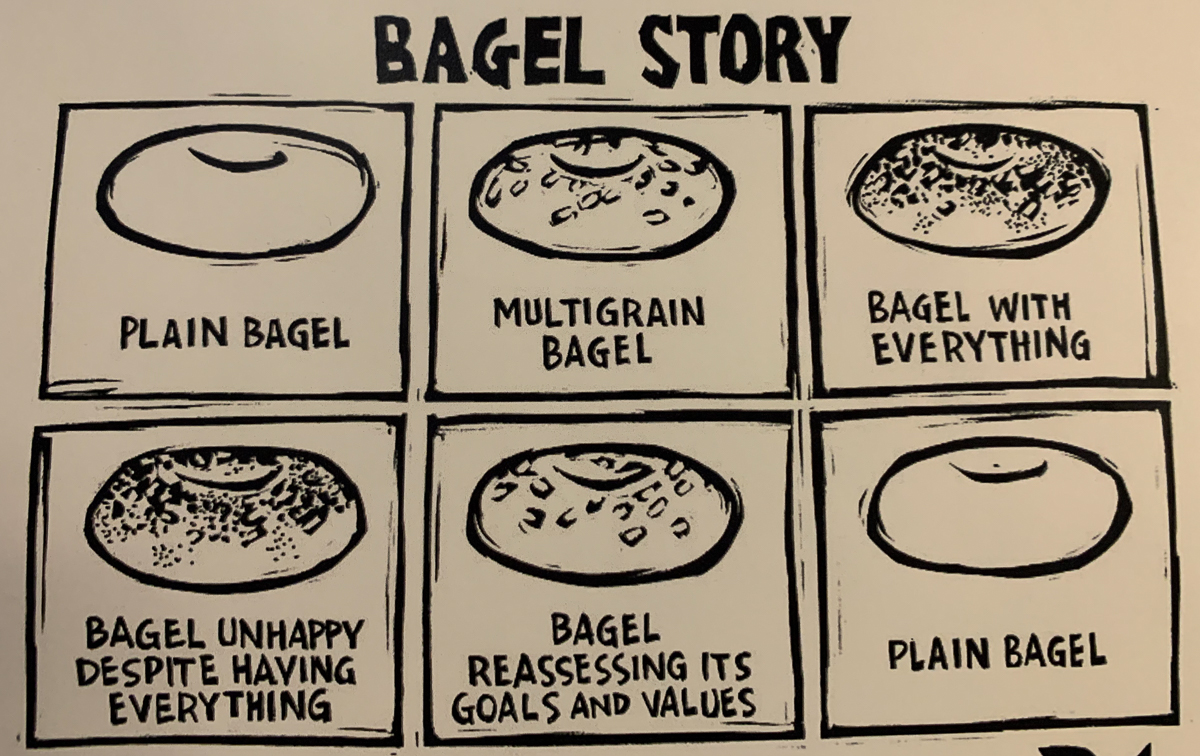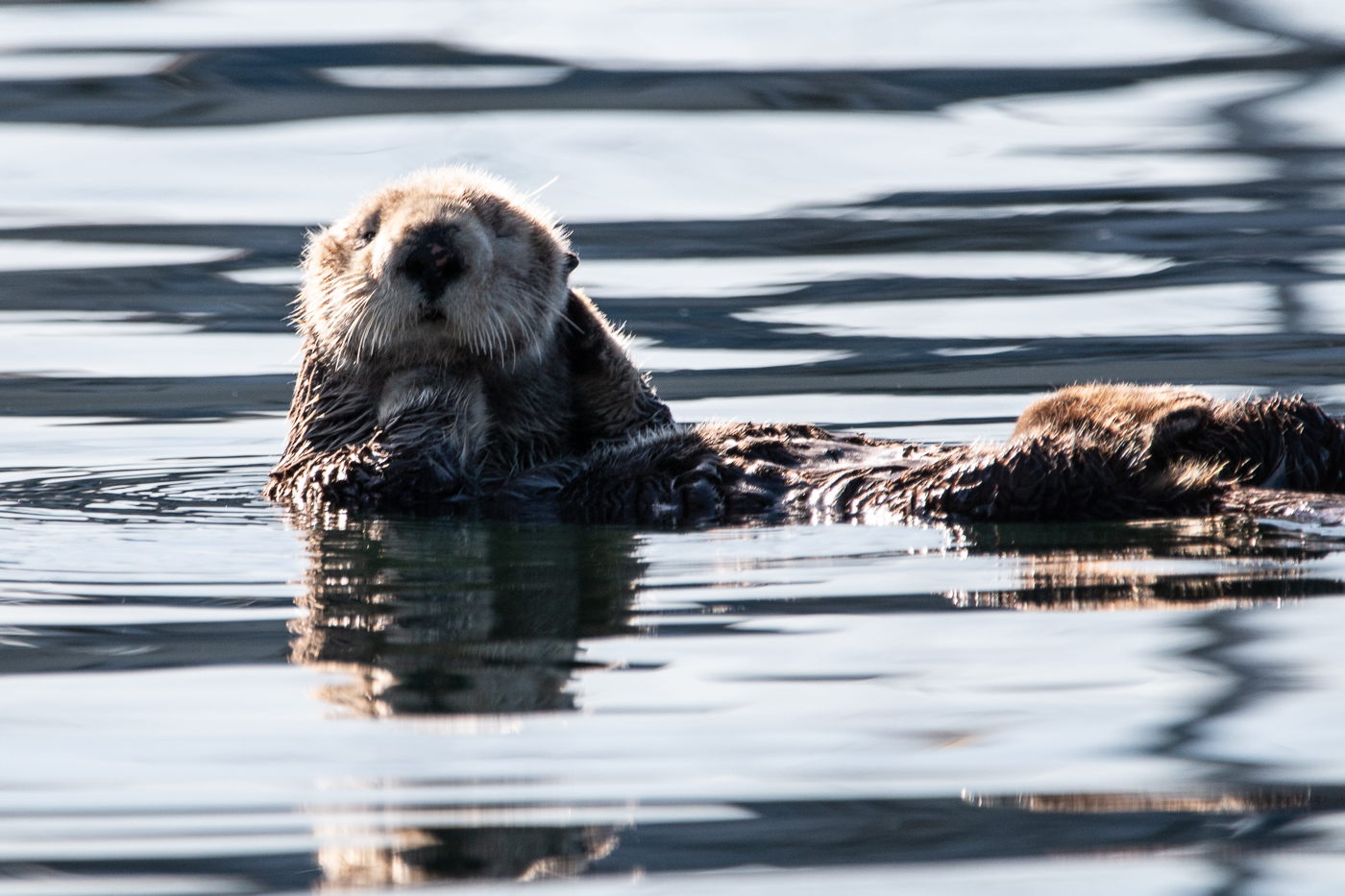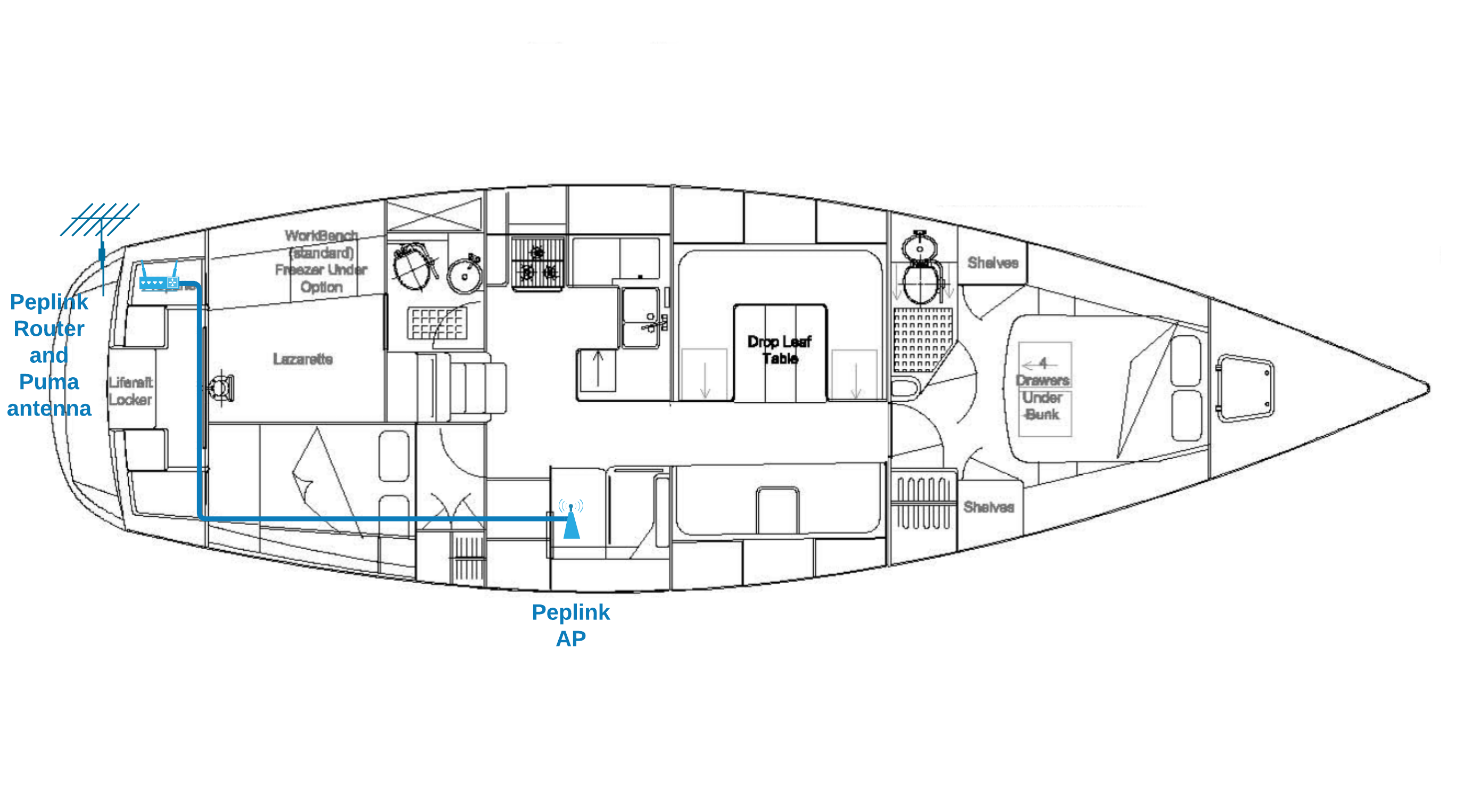
¡Viva México!
We have finally crossed the border and are in Mexico. This is our first foreign country on this journey and a long-dreamed destination. Our introduction to the country, its culture, and customs start with Ensenada. We spend several weeks taking care of the paperwork and doing some boat projects before continuing further. It gives us time to adjust to everything in Mexico.
We arrived in Ensenada on Dec 8th. We started from San Diego at the first light and had a wonderful day – sailing in the morning in a surprising offshore breeze, then motoring for several hours, then sailing again from 1 pm until reaching Ensenada before sunset. Good winds, calm seas, sunny and warm days, what more we could ask for? I hope it’s an indicator of many more such nice days in Mexico. We docked in Marina Coral and were greeted by a nice nurse who checked our vitals and our COVID vaccinations. With that done, we got permission to leave the boat. It was too late to do anything more, so we just set the appointment for the next day to complete all the arrival procedures.

When arriving by boat in Mexico we are required to check into the country in one of the designated ports of entry. Ensenada is one of those. Checking in here is quite streamlined. We got an agent from the marina who shepherded us through all the steps. In Ensenada all the offices we had to visit are conveniently located in one building. First is the immigration where we got our visas, then Banjercito where we got the Temporary Import Permit (TIP) allowing our boat to be in Mexico, and finally to Port Captain where we checked into the port. Our agent told us which lines to stand in, where to pay and took papers from one window and delivered them to the next one. It all went smoothly but required about 3 hours of time and some amount of money.

All in all, in the early afternoon we got all papers in order and went out for celebratory lunch and a walk around the town. Upon return, we hoisted the Mexican courtesy flag.

Ensenada town is in a large bay, giving it some protection from NW and SW winds and waves. There are two marinas located in the town itself – Baja Naval and Cruiseport Marina. The former is the oldest and the least expensive. The docks are old and it is exposed to some swell entering the bay around the breakwater and to waves from the passing traffic. Baja Naval is also a boatyard, probably one of the best in Mexico. The Cruiseport is, as its name suggests, next to the cruise terminal. It is a modern marina with all amenities and is still reasonably priced. Because it is next to cruise ships, it has excellent security. Both of those marinas are just steps away from the center of the city. The third marina, Marina Coral, is located further north and away from the town core. It is co-located with a small resort and boaters get access to hotel facilities, pools, jacuzzi, and restaurants. The marina is modern and very well kept, and also very secure. It is pricier than the other two, and it requires a taxi ride to the town. We stayed in Marina Coral during December, and then hauled out and stayed in Baja Naval in early January. All marinas in Ensenada have a two-tiered pricing system. There is a daily rate, usually quite high, and a much more reasonable monthly rate. Typically, it makes sense to pay for a month if your stay will be a week or longer. It will cost less, even if you do not stay for the full month. The daily rates cannot be retroactively applied towards the monthly payment, the rate must be picked up front.

Before our departure from Seattle, we have decided to apply for Mexican temporary residence. It gives us the ability to stay in Mexico for a year, unlike a regular tourist visa that lasts for up to 180 days and may be issued for less than that. We will write more about that residence visas in a separate post. The process started in Seattle but had to be completed upon our arrival in Mexico. We decided to do that while in Ensenada. As the result, we had to stay put in one place for about 3 weeks. This gave us time to gradually get adjusted to Mexican reality. You may ask ‘what it’s like?’. Well, it is different. Things we take for granted while living in the US or traveling in Europe, are no longer present. In general, the infrastructure is at a much lower level – roads in the city are in varied condition, and sidewalks may or may not exist. Even when they do, we still have to watch where we are going, as we have found open manholes in a few places. Sometimes it looks like house owners built their own sidewalks, each at a different level and not coordinated with neighbors. There are nests of electrical wires at the street poles. The internet may or may not work. The immigration office we visited had to delay the processing of our papers because they have run out of printer ink. Those are just a few examples. But at the same time, no one is mad about those things. People are kind to each other, smile and greet you and patiently go about their lives. Looks like people are interested in each other and helping each other, maybe because there are no institutions that will help them. And looks like they are less stressed and take life as it comes. One thing we learned right away is to not expect anything to be done quickly, but also not to rush things. Anything will take time and there is no point to try to speed it up. Just go with the flow.
The biggest discovery in Ensenada was food and wine. The variety and quality of food options, especially seafood, have been stunning. Ceviche, tacos, and grilled fish, all fresh and tasty. And so many places to choose from. The one that we recommend the most is Sabinas – go there for any dish, but make sure to try their ceviche. Sabina had a street cart, but one day got discovered by Anthony Bourdain, got some fame, and expanded into a full restaurant. The quality of the food did not suffer and she keeps adding new dishes to the menu. A few other places downtown – Mariscos de Bahia Ensenada or La Cevicheria – are other great seafood options, La Hoguera – if you want some grilled meats, make sure to try their salsas prepared fresh for you at the table. If you are looking for Seattle-quality coffee, go to Xcaanda Coffee Bar.
And then there is the whole Valle de Guadalupe – a wine region north and more inland of Ensenada – full of wineries and fine restaurants. We have never heard about Mexican wine before, but upon arriving in Ensenada we started seeing it everywhere. Turns out the wine region there is comparable to California’s valleys, just less posh. With a few fellow cruisers, we rented a van with a driver from Hotel Coral and he took us on a fabulous wine tour. We visited four different wineries, most of them small, family-owned ones. We sampled a lot of wine, bought a few bottles, and ended the day with a delicious dinner watching the sun setting over the hills. It was the highlight of our stay in Ensenada.
The Holidays season came. We have decided to leave Qué vendrá in the marina and travel back to Michigan to spend Christmas with our kids. We booked the plane tickets from San Diego and arranged for a ride from Hotel Coral. Crossing the border in Tijuana by car was a one-of-a-kind experience. The border cuts through the town and there are multiple crossings scattered through it. Each crossing has separate lines for Global Entry holders, US passport holders, and for everyone else. The car lines stretch through the town and it is impossible to know for folks like us which line is which and where it starts. Thankfully our driver knew all the ins and outs and all the shortcuts in the town and got us quickly into the right place. Approaching the border, we were greeted by a multitude of vendors selling pretty much everything and anything – food, drinks, souvenirs, toys, sports memorabilia, tequila, religious items, you name it. And then people doing tricks and stunts, people begging, collecting garbage, it was just one big bazaar. After two hours of waiting, we got through and entered back to the US.

We flew to Michigan and spent a week in cold and wintery conditions – quite an adjustment from the months of sunshine we have experienced so far. But it was good to see our kids and their significant others and spent some time with them. We got back to the boat in the first days of January.
Upon our return, we had one more thing to do – the haul-out. We have been overdue painting the bottom of our boat, something that must be done every few years to keep the barnacles and other sea life from attaching permanently to the boat. This was the first haul out for us since buying Qué vendrá, outside of the boat inspection process. And the first haul out while living onboard. The folks at Baja Naval boatyard have been very professional about the whole process. We arrived as scheduled, and they were ready for us. They made sure the straps were all in the right places and were very careful about lifting the boat. Up we went and into the yard. It was hard to watch our home lifted up and taken out of its element, but they made the whole process very smooth.
Besides painting, we opted to replace the shaft seal and service the propeller. All that work got done in about 10 days, slightly delayed because of one of the mechanics working on our boat contracting COVID. The workers in the yard are organized in guilds, and then they take on various projects on various boats according to their skills. The work is coordinated and tracked by one of the three project managers. We got assigned to Fernando. He spoke good English and was of great help, keeping us informed and keeping the work on track. The whole experience was better than in many boat yards in the US.
We got back in the water on Jan 12 and set our departure date for Jan 15. Well, on that day we woke up to messages from our friends alerting us to an eruption in Tonga and a tsunami warning. This was not a drill! We did not know what to expect, but also did not have much time to do anything. We could go out to the sea, but after messaging our friends at s/v Totem, and talking with fellow cruisers we concluded that we should just stay put. The tsunami came, but not as a big wave, but as a tidal change – water raising and falling by 3-5 feet, in a span of 10-15 minutes, and then repeating that for the rest of the day. The water kept flowing out of the bay and then coming back in. Our planned departure time came and went as well. We were hoping for the water level fluctuations to stop or at least moderate. Around 3 pm we decided to give it a try. But the receding tide and still changing water level caught us by surprise and we got stuck in the mud just as we exited the slip. We managed to limp back and concluded that it was better to wait another day.

So, we stayed until today. We departed earlier than we had to, which means we can go slower and maybe try some sailing in the light winds that we have. We need to grow our sea legs and get acclimated to the moving boat. Ahead of us is a new part of our trip, on the rugged coast of Baja. It is just the two of us this time, with no additional crew. We plan on making one-night hops and catching some rest in between.

